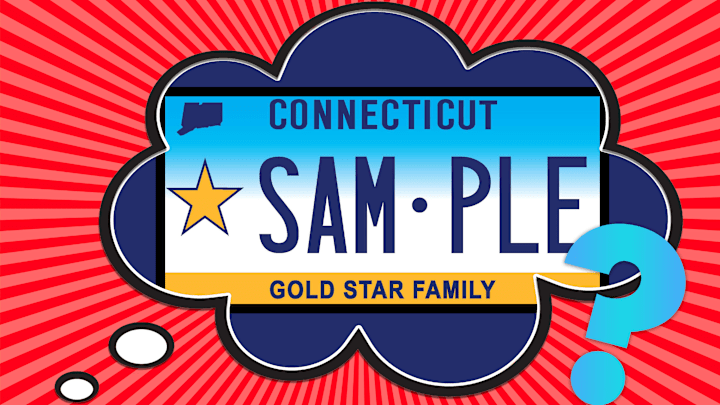No matter which U.S. state you’re in, it’s not uncommon to come across a license plate emblazoned with a gold star, often alongside the words Gold Star Family or Gold Star Mother.
The roots of the custom date back to 1917, when Ohio army captain Robert L. Queisser created a banner to honor his two sons who were then fighting in World War I. The simple design featured a red border around blue stars—one for each active military member—and quickly became popular among other parents of soldiers. The following year, the Women's Committee of the Council of National Defense started encouraging women to wear black armbands bearing a gold star for each fallen soldier in their family.
These two wartime traditions eventually converged, as women—particularly mothers—began covering the blue stars on their banners with gold ones when a loved one lost their life in the line of duty. In 1928, a collective of mothers founded a nonprofit organization called American Gold Star Mothers, Inc., which helped promote the practice. (Their blue-star counterparts established their own group, Blue Star Mothers of America, Inc., in 1942.)

The federal government has endorsed the gold star’s symbolism since its early days, when President Woodrow Wilson approved the armbands. Then, in 1936, Congress passed a resolution to make the last Sunday in September “Gold Star Mother’s Day,” which President Barack Obama updated to “Gold Star Mother’s and Family’s Day” during his tenure.
The banners are still around today; the Department of War (a precursor to the Department of Defense) started regulating them during World War II. Gold star license plates are simply another way for families of fallen soldiers to publicly commemorate the sacrifice. Designs, qualifications, and other details vary by state. Grandchildren, for example, are eligible for the plates in California but not in Vermont. Some states offer blue star license plates, too.
Have you got a Big Question you’d like us to answer? If so, let us know by emailing bigquestions@mentalfloss.com.
